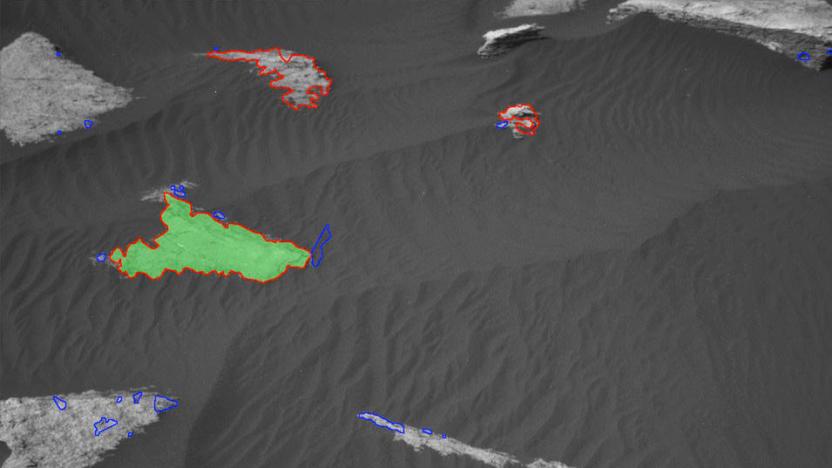chemcam
Latest

Mars Rover’s AI is really good at selecting rocks to analyze
If we truly want to go to Mars, then we really need to know what it's made of -- it's hard to bring everything you need from Earth. NASA's Curiosity Mars rover has been using specialized AI software to zap soil and rocks on the planet this past year to discover what each is made of. The software that guides the rover's efforts is called AEGIS, or Autonomous Exploration for Gathering Increased Science. AEGIS allows the rover to get more science of this nature done while Curiosity is out of contact with its human controllers, according to a new paper published by NASA in Science Robotics.

NASA patched Curiosity rover's autofocus problem over the air
Pardon me while I say something that might not be entirely popular: Software updates are pretty awesome. Maybe not so much for game consoles, but, I digress because the Curiosity rover recently received a patch that improved the autofocus of its "ChemCam" telescope. Over the air. On Mars. Before the update, scientists at Los Alamos National Laboratory would take nine pictures of a subject (each at a different focus) to get one usable close-up image of any of the Red Planet's rocks and soils, and send them back home. Same goes for any sample analyses the laser was doing. The problem is that for those analyses to be anywhere remotely useful, the telescope projecting said laser needs to be in focus and the workaround in place wasn't very efficient.

Curiosity rover warms up its laser with basaltic rock blast
Intrepid 6-wheeler Curiosity perhaps protested too much when it tweeted "Yes, I've got a laser beam attached to my head. I'm not ill tempered; I zapped a rock for science." NASA turned the rover's high-powered laser loose with 30 pulses of a million watts each, reducing a thin layer of the chosen stone, dubbed N165 "Coronation," to plasma. The resulting spectrum was then analyzed by the on-board "ChemCam" to determine its composition, and the US/French team who developed the system said it's working even better on Mars than it did on terra firma. The results are now being studied, but if we had a laser beam on another planet, we'd be firing it all over the place -- in the name of "science," of course.


